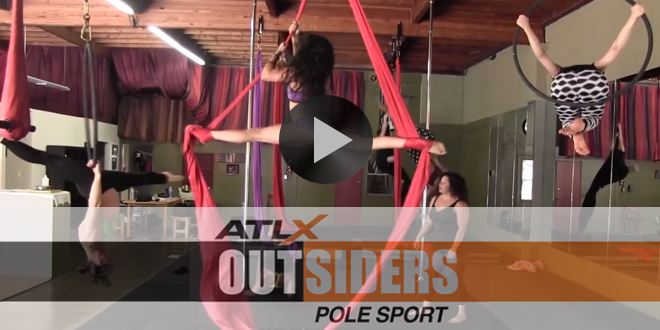By: Sarah McWilliams
From everyday joggers to competitive marathoners, runners of all levels are plagued with injuries. They have to deal with shin splints, tendinitis, plantar fasciitis, stress fractures; the list goes on and on. And more often than not, the so-called solution to these ailments is a better pair of running shoes.
But what if our shoes are the problem?
 In his 2010 bestselling book, Born to Run, author Chris McDougall brought the idea of barefoot running to the masses, and since that time the practice has become the running world’s most polarizing craze. Many, like McDougall, believe barefoot running to be the purest, most economical form of running, not to mention something of a miracle cure for our modern running injuries. Others, perhaps understandably, think it’s certifiably nuts to take off for a ten-mile jog without shoes.
In his 2010 bestselling book, Born to Run, author Chris McDougall brought the idea of barefoot running to the masses, and since that time the practice has become the running world’s most polarizing craze. Many, like McDougall, believe barefoot running to be the purest, most economical form of running, not to mention something of a miracle cure for our modern running injuries. Others, perhaps understandably, think it’s certifiably nuts to take off for a ten-mile jog without shoes.
Bear in mind that the term barefoot running is somewhat deceiving in that most advocates of this practice aren’t actually running barefoot. Rather, they’re minimalists, wearing minimalist footwear like Luna Sandals or the Vibram FiveFingers – thin-soled, largely unsupportive footwear that approximate the action of barefoot running while still providing a protective covering for your feet.
One of the main theories behind minimalist running is that without the cushion and support of conventional shoes, leg and foot muscles that would normally remain dormant are instead activated, and thus strengthened. What’s more, a Harvard University study found that “most experienced, habitually barefoot runners tend to avoid landing on the heel, and instead land with a forefoot or mid-foot strike,” which is important in that the body is forced to absorb much more shock with a heel strike.
Ultimately research is still inconclusive as to the benefits of barefoot running, but the anecdotal evidence in support of the practice is, at the very least, intriguing. In Born to Run, McDougall writes at length about the Tarahumara people in Mexico, a tribe that boasts some of the greatest distance runners in the world. They’ve been running barefoot, or in minimalist footwear, for centuries, and still do to this day, and they suffer from few of the chronic injuries that we do.
Furthering the testimonial power of the minimalist movement is Ted McDonald, founder of the aforementioned Luna Sandals. Aptly nicknamed Barefoot Ted, McDonald found that barefoot running all but cured his own running injuries. However, the fact remained that not all ground is safe for actual barefoot running. The idea for his Luna Sandals came on a trip to Copper Canyon, Mexico, for the first Copper Canyon Ultra, a race pitting top American endurance runners against the Tarahumara tribe runners.
 There, McDonald came across Manuel Luna, a local Tarahumaran runner who was sporting a pair of sandal-like kicks made of old tire rubber and leather lacing.
There, McDonald came across Manuel Luna, a local Tarahumaran runner who was sporting a pair of sandal-like kicks made of old tire rubber and leather lacing.
Luna wound up teaching Barefoot Ted how to make a pair for himself, which became something of a prototype for Luna Sandals. McDonald started out making the sandals in his garage, and today Lunas have been shipped to more than 65 countries on every continent.
Most people, it seems, were starting to think that unless they had an extraordinarily complex, supportive shoe, maybe with special inserts or orthotics made especially for them, they were never going to be able to run,” said Barefoot Ted. “But that’s just as foolhardy as saying you never need a shoe ever under any circumstances.”
Ted willingly admits that wearing minimalist footwear, obviously, doesn’t erase all possibility of injury; it simply minimizes the risk. Dr. Kenneth Jung, an orthopedic surgeon at the Kerlan-Jobe Orthopaedic Clinic, agrees to a point. While pointing out that factors such as nutrition and training habits contribute just as much, if not more, to our injuries, Dr. Jung has seen positive results in patients who were suffering from things like heel pain and plantar fasciitis who went ahead and made the switch to barefoot or minimalist running. The key, he says, if you are indeed going to make the switch, is to do so gradually, as Dr. Jung also sees plenty of overuse injuries associated with people switching to minimalist shoes without allowing their body time to adjust.
“Typically we wear shoes for normal activities, so our feet, by nature, are accustomed to them,” Dr. Jung said. “So if you do normal activities with shoes, and then [suddenly you go running without them], that doesn’t make a whole lot of sense.”
In the end, barefoot running is simply an option. Many runners swear by it, and one day you might, too. But as Barefoot Ted stresses, each person is on his or her own journey, and needs to find what works best for them. This major change shouldn’t be tackled blindly, but rather by reading and understanding the credible research, as well as speaking to your health care professional with any concerns. If you do want to give it a shot, start slowly, work up, don’t overdo it and listen to your body. It will tell you everything you need to know.
 ATLX The only sports entertainment television and digital media network fully devoted to everyday athletes, athletic lifestyle and athletic culture.
ATLX The only sports entertainment television and digital media network fully devoted to everyday athletes, athletic lifestyle and athletic culture.





